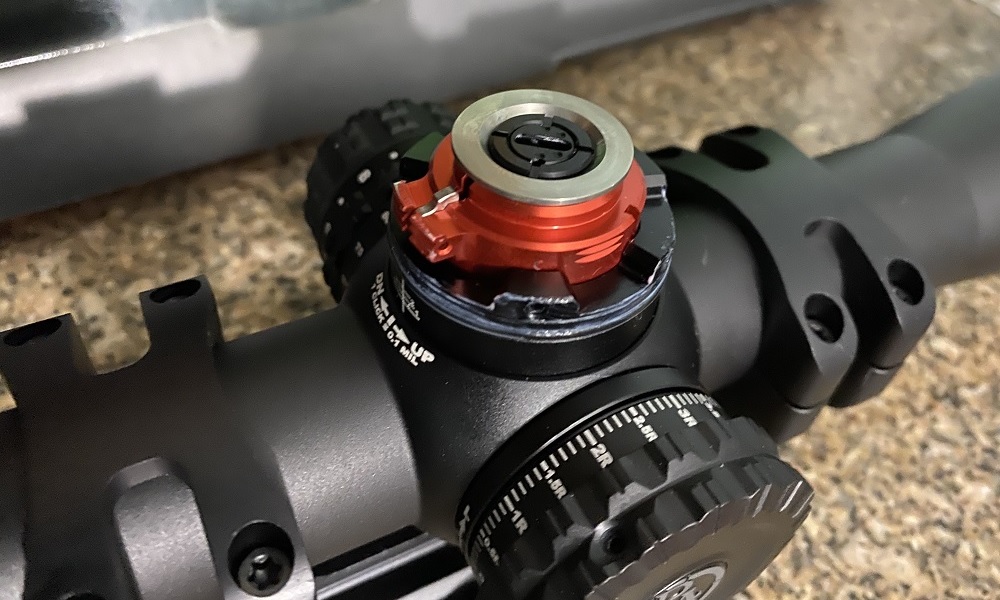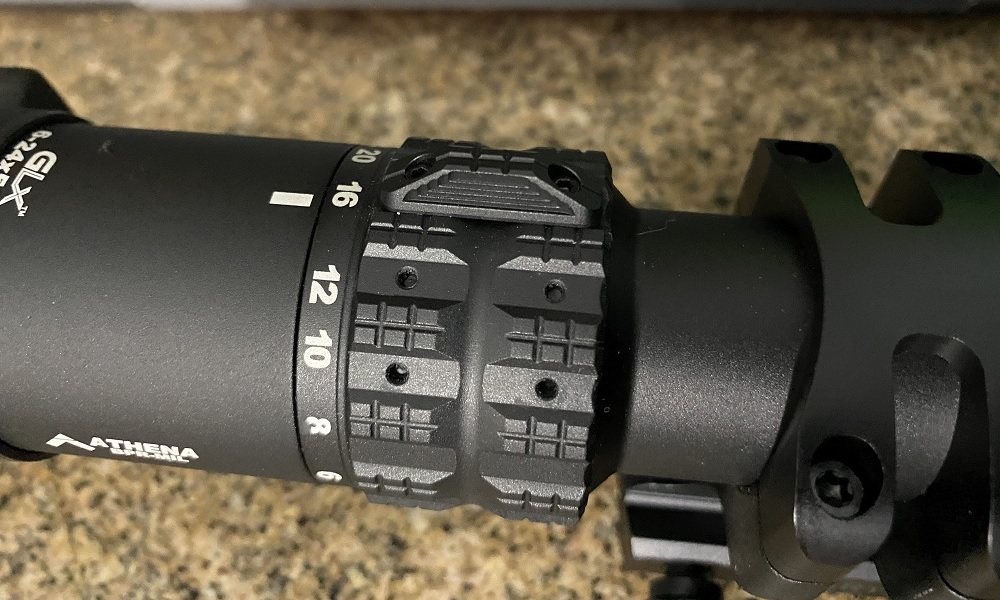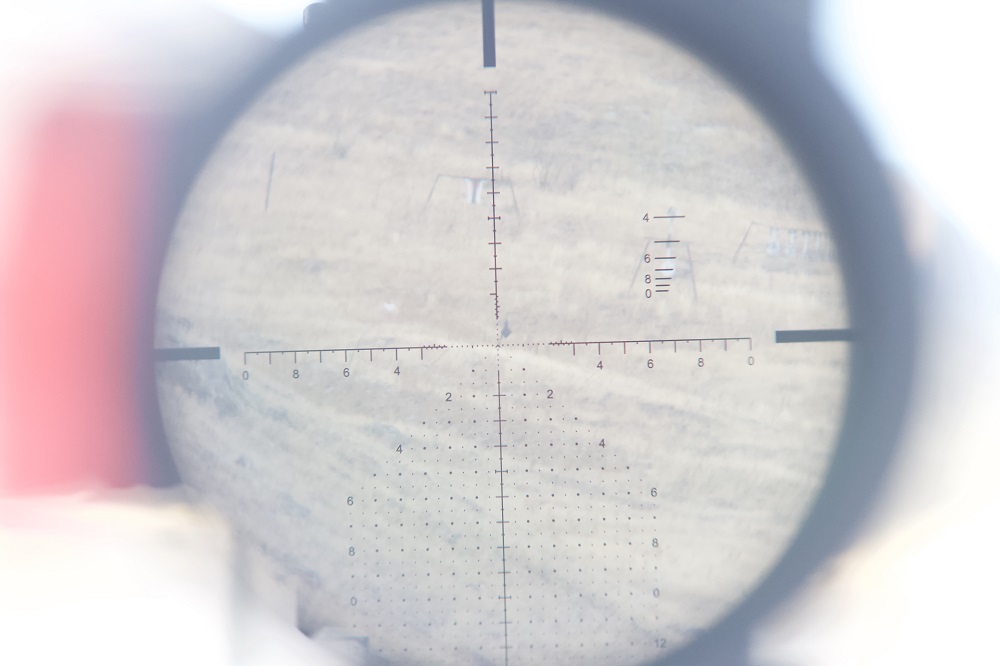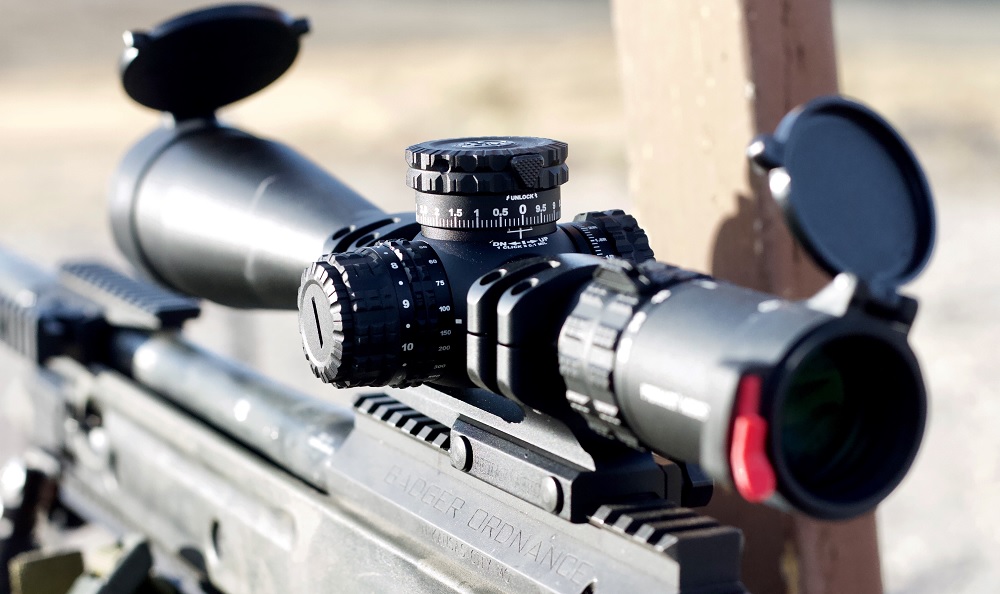[Review] Primary Arms GLx 6-24×50
Cory Mince 12.10.20
![[Review] Primary Arms GLx 6-24×50](https://outdoorhub-res.cloudinary.com/image/fetch/f_auto,q_auto:low,w_auto,dpr_auto/https://cdn.outdoorhub.com/wp-content/uploads/sites/2/2020/12/PrimaryArmsGLXreview.jpg)
Primary Arms is a company that has been selling feature rich and modestly priced scopes for quite a few years. They have gained some prominence not only for the great value their scopes offer, but the, dare I say brilliant, reticle designs. That’s not to say ALL of their reticles are to my liking, but they are all clever and useful. The Primary Arms GLx line is designed to compete in the already crowded mid-tier range of precision rifle scopes, and it has its elbows out.
In The Box
The GLx came nicely, albeit conservatively packaged. It came with two manuals: one for the scope itself and one for the reticle. Instead of the typical near useless bikini covers for scopes in this price range, I was pleasantly surprised to find a pair of Butler Creek scope caps included in the box. Also included in the box is a detailed inspection sheet reviewed and signed off by a quality inspector. I was very happy to see this as I can see what their spec is, as well as what their inspection points are along with who reviewed them. This gave me confidence in the quality of the scope right away.
Specs

Let’s take a look at the specs from Primary Arms:
Click Value: 0.1 Mil
Exit Pupil Diameter: Low: 8.10 mm / High: 2.20 mm
Eye Relief: Low: 3.60 in / High: 3.50 in
Field View 100: Low: 15.20 ft / High: 4.20 ft
Focal Plane: First Focal Plane
Illuminated: Full Illumination
Maximum Magnification: 24
Minimum Magnification: 6
Night Vision Compatible: Night Vision Compatible
Objective Diameter: 50mm
Reticle: Athena BPR MIL
Reticle Type: MRAD
Total Elevation Adjustment: 17.5 MIL
Total Windage Adjustment: 11.6 MIL
Tube Diameter: 30mm
Weight: 24.5 Oz.
Ergonomics
There is somewhat of an ongoing debate about the need for locking turrets. Some believe that their turrets will be moved inadvertently while carrying or storing their rifle. I am firmly of the opinion that locking turrets are an unnecessary and annoying feature. If the turret’s detents lock positively enough, locking is redundant. If you confirm your DOPE before the shot, it’s a non-issue anyway. Primary Arms has approached this debate in a way that should make both sides happy. They added a push button on the elevation and windage turrets that, when depressed, allows the shooter to adjust the turrets freely, and will only lock again when returned to zero.

Turret click quality is always an interesting discussion point as there is no established standard. My criteria for determining acceptability of clicks is based on their practical value. That is, whether or not I can feel the clicks through winter gloves, and hear the clicks while wearing in-ear hearing protection. The clicks on the turrets are acceptably tactile and audible.
Primary Arms decided to stack the illumination and parallax turrets in what is now a common configuration. This allows for more real estate and flexibility in mounting the scope in rings or uni-mount. The outer adjustment is for illumination and incorporates another useful feature of an off position between each illumination setting. If you ever use illumination, it is handy to be able to switch the reticle on and off directly from your desired illumination setting. The inner adjustment is of course for parallax.
The knurled portion of the parallax adjustment has a slightly larger OD than the illumination, making it very simple for the user to distinguish between the two adjustments.

Magnification rings vary considerably in size, resistance, and orientation from manufacturer to manufacturer, and even from scope model to scope model. It’s common to see low power variable scopes with large levers (some integral, some added) connected to the magnification ring in order to make quick and easy magnification adjustments. The problem with large levers on a bolt action rifle is that, depending on the orientation of the lever, they can interfere with the user’s operation of the bolt. I know more than one shooter with scars on their right thumb from exactly this issue.
Primary Arms has come up with a clever solution and has added what I like to call a magnification adjustment fin. Along with a well tuned magnification ring, the lower profile fin provides plenty of leverage for quick magnification adjustments, gloved or not.

Some shooters are picky as to the orientation of their magnification ring levers, and with the fin, the user can simply unscrew it and place it in one of the other available positions.
Reticle
- PA’s reticles
- Subtensions
- Info/Obscuring
- Illumination
As mentioned above, Primary Arms has made a name for itself largely because of some very clever reticle designs. The GLx I received came with their ATHENA BPR MIL reticle. The BPR is a fairly extensive grid reticle, and at first glance, maybe a bit overwhelming. The center of the reticle is a vertical chevron, sort of a hallmark of Primary Arms reticles, flanked by 0.2 vertical and horizontal stadia. You’ll notice that there aren’t solid bars on the x-axis for 2 mils (from center), and on the y-axis for 1 mil (from center). This allows for more of the target to be visible when making fine wind holds. It’s a feature I rather like and wouldn’t be surprised to see on more scopes in the future.
The reticle also features a convenient Ranging Ladder for targets that are 5’10” tall and 18” wide.
Although laser rangefinders are commonplace, and most ranges have known distance targets, I like to have redundancy in my critical gear. Keeping it simple with the Ranging Ladder prevents me from having to bust out the Mildot Master or calculator to determine range to target. I found the Ranging Ladder convenient at my home range where they recently placed full IPSC targets at random distances specifically for UKD stages. Thanks Paul!
From the center of the reticle, the stadia branch out in a “Christmas tree” style pattern.

I have been an outspoken critic of excessively busy reticles in the past, and won’t elaborate on it here, but I think the grid section of the BPR reticle is pretty busy. Not as bad as some I’ve seen, but more than I’d like to see. I didn’t have any issues spotting impacts due to the reticle, but it was a dry day with close backstops and plenty of dust. I’d be interested to shoot with this scope in the rain, snow, long grass, or any other environment that makes spotting impacts challenging.
The illumination on the reticle is plenty bright. With dark targets in dark backgrounds, I’ll often turn on the illum. This is a scope which I’d feel comfortable in the majority of lighting conditions where illumination would make sense. To include the knob, I’d say the illumination system was well designed and executed.
Glass
Optical clarity is a fairly subjective topic, and not everyone sees through every scope similarly. And as I’ve stated in previous articles, I’m not a glass connoisseur, simply an end user. In the early morning/ late evening, dimly lit streets at night, and in high mirrage conditions, the GLx glass does quite well.
Conclusion
The Primary Arms GLx 6-24×50 scores well in all the categories that are important to me, and those are the features which make it functional. The GLx also scores well in the nice- to-have category, which makes running the scope for hours on end, range session after range session, match after match, much more pleasurable. If you are in the market for a mid-tier scope that punches well above its weight, you would do well to consider the Primary Arms GLx 6-24×50.


